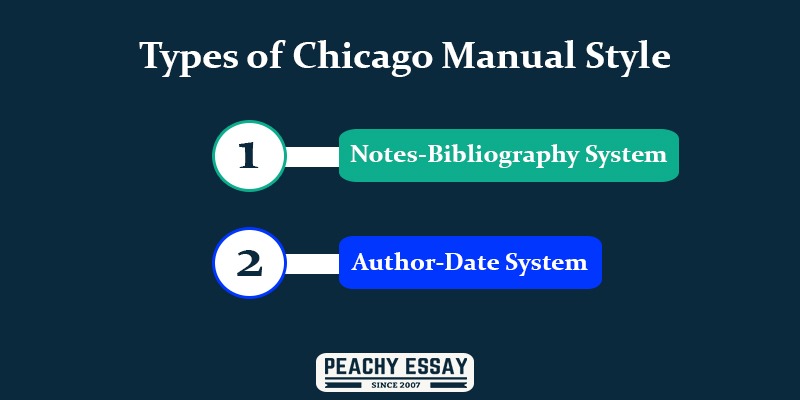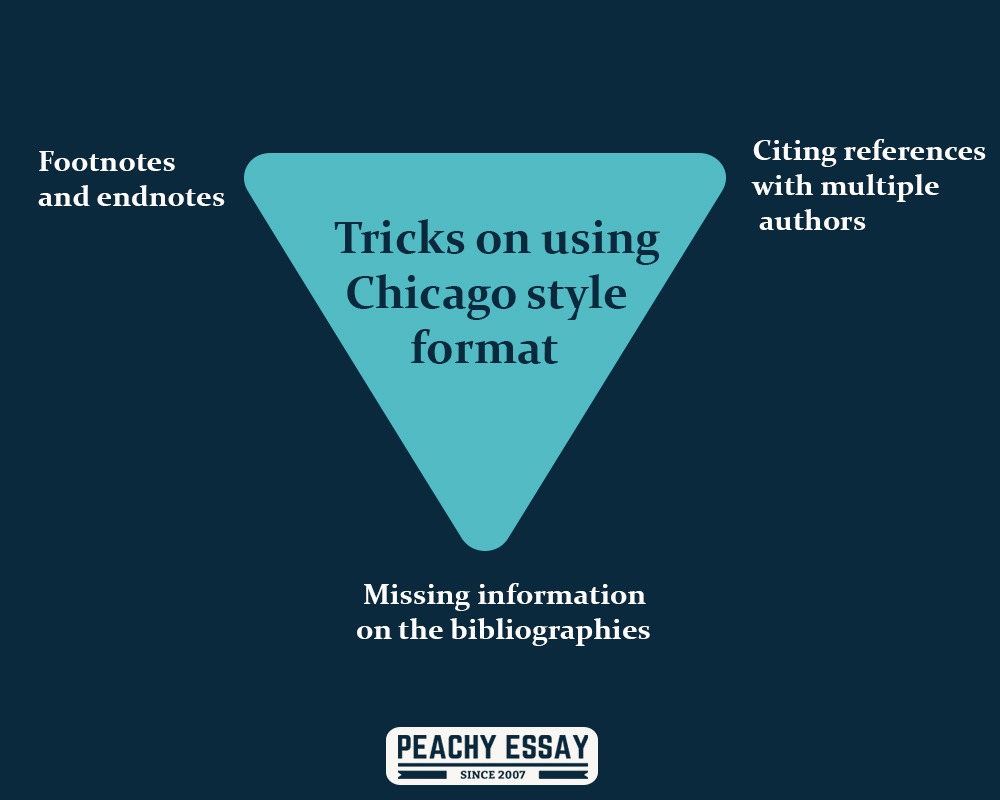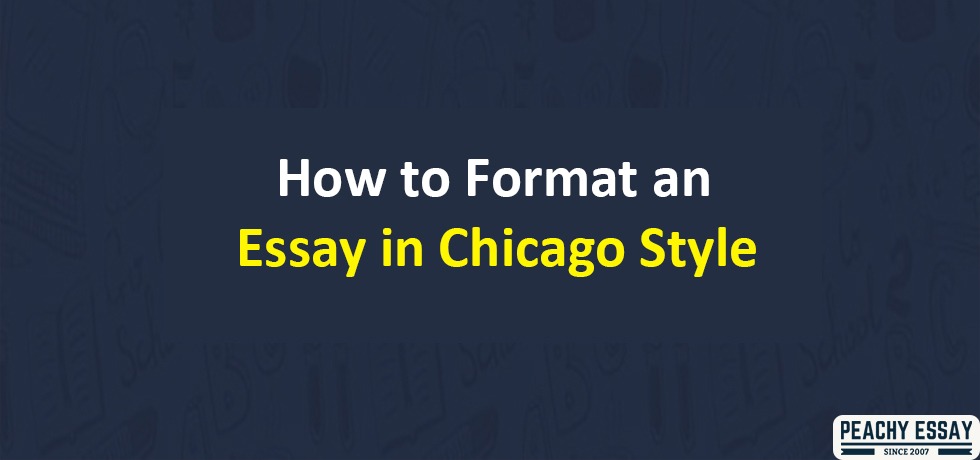How to Format an Essay in Chicago Style
Different kinds of writing formats have varying requirements on how an individual should format the paper. Your examiner has assigned you an assignment, and one of the requirements is that you should format it using Chicago style. All the instructions are okay, apart from when you start wondering what the Chicago writing format is? With all the different writing formats such as Harvard, MLA, and APA, it can be challenging to keep track of what is entailed when it comes to writing using the Chicago format.
What is the Chicago Manual style format?
By definition, the Chicago writing format is a style that was initially used in writing American English, and it covered different topics from grammar to manuscript presentation and how to format citations. The Chicago Manual Style, commonly denoted as CMS, was published for the first time in 1906 and thereafter in 2003. There are two different systems of Chicago Manual Styles, which include: the Notes-Bibliography System (NB) that is used in humanities and arts and the Author-Date System that is used in social, natural, and physical sciences.
Types of Chicago Manual Style
As stated above, there are two different systems of Chicago Manual Styles, which include:

The Notes-Bibliography System (NB) and the Author-Date System. The Notes-Bibliography System is mostly used in writing papers that are in the field of history. Such fields entail citing sources using endnote or footnotes, and they often supplement information using the information in the bibliography. Apparently, the in-text citation can be concise, particularly when the bibliography is included. The Chicago Manual Style recommends using either of the two citation formats to avoid presenting duplicated information as well as to make it easier for the reader to understand the different sources used.
On the other hand, the Author-Date system is a system of documentation that should be used mostly in the field of sciences. The sources are cited in the text with a parenthesis, where there is the author’s name, the year of publication, and the page number if necessary. Here is an excellent example of how the format should look like;
(Arnold 2020, 25)
Your reference entry may look like this;
Arnold, M., 2020. The Effect of Global Warming in the World. New York: Big Publishing House.
Why use the Chicago format?
The Chicago format has a significant number of advantages. For instance, in addition to simplifying the editors’ work, the Chicago writing format also aids in making it easier for the readers to comprehend the ideas written on a paper by providing a structure the readers can relate with. Adhering to Chicago’s format guidelines aids in the following ways;
Provide the readers with various cues they could use to understand the ideas presented in the paper more efficiently as well as to locate information that interests them.
The guidelines also allow the readers to concentrate more on their ideas by eradicating unfamiliar formatting.
The guidelines aid writers in establishing credibility or ethos in the academic field.
The other advantage of using the Chicago writing format is that through the use of footnotes, you do not have to repeat the citation from the same source in full. Apparently, if a particular source has been used on the same paper, the writer only needs to include information that will relate to the previous source. On the same note, if different parts of the reference material are cited back to back, the second footnote would be cited using the term “Ibid.”
Chicago formatting style does not have a specific guideline or design requirement for writing different levels of heading. However, if you are using different levels of headings in your paper, you need to be careful about using more than three levels of subheadings on the same paper. You should always ensure that each level of the subheading is supported with enough quantity of information. Avoid creating different subheadings if you only have a single subheading on its level.
When it comes to the length of the paper regarding the Chicago writing format, it is not advisable to insert subheadings on papers that are shorter than five pages. Subheadings are not used to label different ideas but to separate different sections of the paper. You can organize your ideas by beginning each of your introduction paragraphs with topic sentences and finishing with transitions. Avoid using Roman numerals, alphabets, or numbers with your headings.
How do you format a paper in Chicago style?
Your lecturer expects you to be aware of the Chicago formatting style, and hence, it is essential that you do adhere to all the requirements of formatting style. Here is a list of important things to consider;
- The page of your assignment should have a one-inch margin on the bottom and topside
- Always use the Times New Roman font type
- Your font size should be 12
- Your entire paper should be double spaced
- Always use the left-alignment not unless it is indicated otherwise
- Always number your page on the top right corner of your work
- The first sentence of every paragraph should be indented with 0.5 margins
Cover page
- Include the title of your work at the middle of the page
- Include the name of the student directly under the title
- Include the teacher’s name, institutional affiliation, and the date the work was done
- Avoid making your cover page decorative by using creative fonts, underlining, or decorating.
- Do not count your cover page in your total word count
Arrange your paper in the following format
- Cover page
- Body of the paper
- Appendix
- Bibliography
Using names and numbers
It would be best to mention the full names of agencies, institutions, and people the first time you use them.
After mentioning them for the first time, you may proceed to refer people using their last names or acronyms for the rest of the paper.
Tricks on using Chicago style format
Different types of writing formats will have varying requirements. Therefore, it is essential for students first to have a good understanding of the requirements of a paper before they can start writing. At times, a person may feel overwhelmed because of the need to understand all the concepts pertaining to various writing formats. We shall provide you with a few tricks on how to use the Chicago formatting style.

Footnotes and endnote
It is essential first to understand where the footnotes and endnote a placed on a paper. Whereas an endnote appears on a different section, towards the end of a text, before the bibliography section, a footnote, on the other hand, appears at the bottom of the page. The citation of your work should look the same way as it appears in your endnote and footnotes.
Citing references with multiple authors
If your source material contains more than three authors, you should list their names based on their written order in the original reference material. When your reference contains more than one author, you should state the first author’s surname and include the phrase “et al.,” to stand for the other authors.
Missing information on the bibliographies
Although one of the requirements for writing a bibliography is the page number, it is not always necessary particularly, if the source does not have page numbers. Apparently, you can always omit the page number when referring to a general text of an argument. If your source does not have page numbers, but you would still want to refer to the exact place you retrieved the information, you are allowed to use the paragraphs or chapters.
If the source does not have a publication date, you are allowed to write “n.d” in the place of the year.
Is Chicago style the same as APA?
There are significant differences between the Chicago and APA referencing formats. Therefore, writers should be careful enough to settle on the writing formats that deliver their intended message to the audience using an efficient manner. One of the differences between the two referencing formats is based on the in text citation. Both formatting styles include a page number and the author’s last name in the in-text citation’s parenthesis. However, the other difference is that, whereas an APA formatting style includes the year a particular source was published, the Chicago formatting style does not.
Whereas the APA style makes use of in-text citation, the Chicago formatting style, on the other hand, uses footnotes to cite the sources. A footnote provides more detailed information about the sources that were used as compared to the in-text citations. One of the similarities is that in both APA and Chicago, the page numbers are inserted at the page’s upper right corner. Finally, in regards to the similarities, both styles mention the last full names of the authors when listing the sources on the bibliography or reference list.
Essentially, it is essential to note that both APA and Chicago writing formats encourage the writers to use in-text citation whenever possible. Whereas the APA uses in-text citation, the Chicago formatting style uses footnotes. On the same note, both Chicago and APA require the writer to cite the various sources used in writing the paper on a different bibliography page.
What is CMOS format?
The term CMOS stands for Chicago Manual of Style format. The CMOS format can be used in writing theses, dissertations, or research papers.
Chicago style template
Write the title of your essay here: The Chicago Style Template
- (1/4 page down from top)
- Write your name here
- Institutional affiliation
- Date here
- (All double spaced)
- (1/2 page down from top)
(Insert a Page Break here to maintain separation in your title page and page one)[1]
————————————————Page Break——————————————————-
You should not insert a page number in the title page of your work. If you are writing a thesis, your thesis statement should appear at the top of the paragraph, and you will use Arabic numerals to cite your sources in the form of footnotes.[2] Your footnotes should be located at the bottom of your page. The good thing about Chicago Style is that your word processor will insert the footnotes as well as format the paper for you.
Although there are more than fifteen formats of writing academic papers, the commonly used ones are Chicago, MLA, and APA. Most English-speaking students use the Chicago style since it retains a more explicit text and provides room for flexible access to both the ancillary materials and sources. Therefore, it aids in the promotion of a more interactive and critical reading of the text.[3]
For the sake of this class, you should include the word count at the bottom of your final page. You can finish your manuscript with a separate page for the works cited where you will include a list of all the sources used in writing the manuscript.[4] Students are always encouraged to use the symbol “ibid.” in their footnotes when they are referring to the same authors in the previous citations.
The final word
The Chicago writing style is different from other formats such as MLA, APA, and Harvard. Therefore, an individual must have a good understanding of the formatting style so that they can deliver top-notch papers. I hope that the above article assisted you in grasping all information regarding the Chicago writing format.
[1] Format of the page title: Your title page should contain the essay’s title together with the institutional affiliation and the date. Next, you should go to the “Page Layout” preferences and click on the “Different First Page” option, which will ensure that every page has a different page number. It would help if you learned how to use the page layout feature for your word processor. Ensure that you always use Times and 12 pt. Font and 1″ margins for all your papers.
[2] The footnotes aid in indicating various citations – indirect quotes, paraphrases, and direct references. The footnotes also allow the writer to add their personal information, which could be a direct part of their manuscript.
[3] In essence, the footnotes serve as a reference and writing tool since it is flexible and economical.
[4] The works cited page is optional when an individual uses the Chicago Style since all the information has already been provided in the footnotes.




